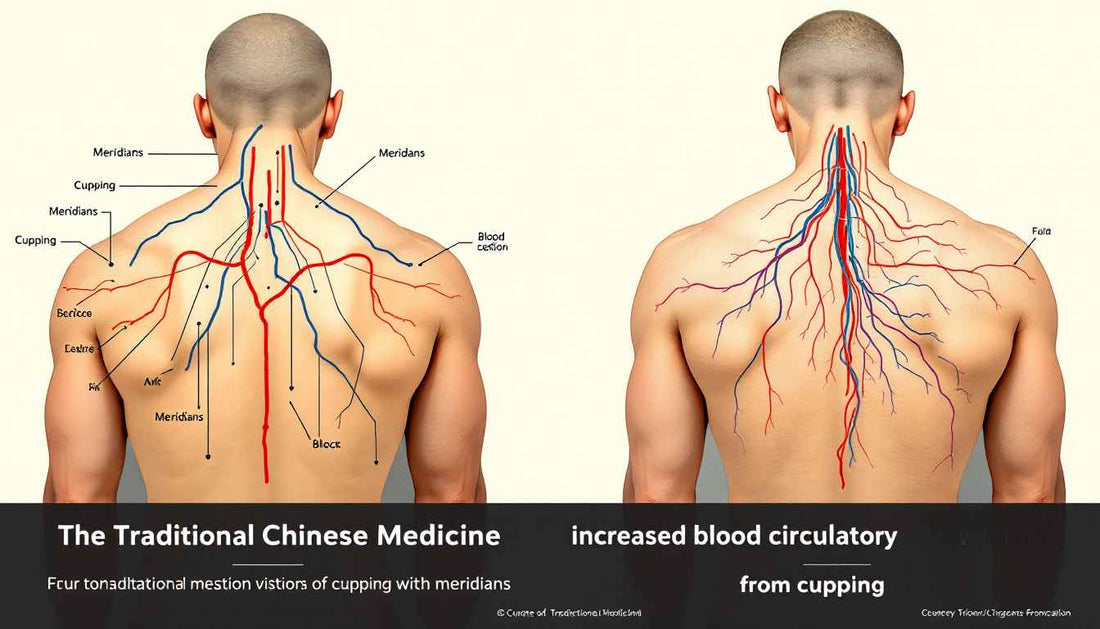
The Science Behind Cupping Therapy: Ancient Wisdom Meets Modern Proof
Share
Is there real science behind cupping therapy, or is it just another ancient wellness trend? While cupping dates back thousands of years in Traditional Chinese Medicine (TCM), modern science is finally catching up—and confirming its benefits. From increasing blood flow to reducing inflammation and influencing the nervous system, cupping therapy science offers compelling insights into why this method works. In this article, we’ll explore the mechanisms, studies, and cross-cultural traditions that give cupping its healing power.
What Is Cupping Therapy?
Cupping is a therapeutic technique where suction cups are applied to the skin to draw blood to the surface, reduce pain, and improve circulation. Originating in ancient Egypt, Greece, and China, cupping has stood the test of time—and it's now being studied by modern science for its physiological effects.
🡒 For a general overview, see: Cupping Therapy Explained
How Cupping Therapy Works (TCM View)
In Traditional Chinese Medicine:
- Qi (life force) flows through the body along meridians.
- Cupping clears stagnation of Qi and blood, restoring energy balance.
- It draws out “wind,” “cold,” and other pathogenic factors from the body.
Common meridian points used in cupping include the Bladder, Gallbladder, and Stomach channels—each targeting different organs or systems.
The Science Behind Cupping Therapy (Modern View)
Modern research confirms several mechanisms by which cupping therapy creates physical and therapeutic change:
1. Increases Blood Circulation
Suction draws blood to the area, increasing microcirculation and stimulating healing in the muscles and connective tissues.
📚 Study Spotlight:
A 2012 study published in PLOS ONE found that cupping therapy significantly increased blood flow and oxygenation in treated areas.
2. Reduces Inflammation
Cupping may activate the immune system by triggering local inflammatory responses, which in turn promote healing and tissue repair.
📚 Study Spotlight:
Research from The Journal of Traditional and Complementary Medicine suggests cupping can help modulate inflammatory cytokines, especially in patients with chronic pain conditions.
3. Stimulates the Nervous System
The pressure and suction stimulate cutaneous receptors, which may block pain signals through what's known as the Gate Control Theory.
4. Releases Myofascial Tension
Cupping helps separate and loosen fascia (the connective tissue around muscles), promoting better range of motion and reducing muscle tightness.
🡒 Learn more in Cupping for Muscle Recovery
5. Detoxification Support
Some practitioners claim that cupping removes toxins through increased lymphatic flow. While not fully proven, it’s a widely accepted mechanism in both Eastern and integrative medicine.
Types of Scientific Cupping Research
| Research Type | Findings |
|---|---|
| Clinical Trials | Show positive effects on neck/back pain, arthritis, migraines |
| Meta-Analyses | Moderate evidence for pain relief, especially musculoskeletal |
| MRI/Imaging Studies | Reveal improved tissue perfusion and reduced inflammation |
📚 Example: A 2015 meta-analysis in Evidence-Based Complementary and Alternative Medicine concluded that cupping therapy significantly reduced chronic back pain when compared to conventional treatment alone.
Cupping and Placebo Effect: Is It All in Your Head?
Critics argue that cupping’s effectiveness may partially be due to the placebo effect. However, studies that use sham cupping controls (where no suction is applied) still show notable differences in outcomes—indicating that the suction and physiological changes are indeed key to its efficacy.
Integration into Western Healthcare
Hospitals, physical therapists, and even Olympic teams now use cupping as part of integrative medicine programs. It’s often combined with:
- Chiropractic care
- Physical therapy
- Massage therapy
- Acupuncture
🡒 Also read: Benefits of Suction Cupping
Safety and Side Effects
Scientific studies also review cupping’s safety. While generally safe, mild side effects may include:
- Bruising
- Temporary soreness
- Skin irritation
🡒 Full details: Cupping Therapy Side Effects
What is the science behind cupping therapy?
Cupping therapy works by increasing blood circulation, reducing inflammation, stimulating the nervous system, and relaxing fascia. Scientific studies show it can help relieve pain, improve mobility, and support healing.
FAQs (People Also Ask)
Is cupping scientifically proven?
Yes, studies show that cupping can relieve pain, improve blood flow, and support musculoskeletal recovery. While more large-scale studies are needed, current evidence supports its effectiveness.
How does cupping work biologically?
Cupping increases microcirculation, reduces muscle tension, and stimulates the immune and nervous systems to promote healing.
Does cupping remove toxins?
Though not fully proven, cupping may aid detox by improving lymphatic drainage and circulation, according to integrative medicine perspectives.
What is the difference between wet and dry cupping scientifically?
Dry cupping relies solely on suction, while wet cupping includes controlled incisions to remove blood. Wet cupping is said to eliminate “stagnant” blood but carries more risks and requires sterile techniques.
Conclusion: Bridging Tradition and Science
Cupping therapy isn’t just ancient tradition—it’s a treatment grounded in biology and backed by research. From its ability to increase blood flow to its impact on inflammation and fascia, modern science is validating what TCM has known for centuries. Whether you're a skeptic or believer, the evidence is clear: cupping therapy works, and it’s here to stay.
CTA: Download the Free Cupping Science Summary PDF
Want the science at your fingertips? Download our FREE “Cupping Therapy Science” PDF, summarizing key studies, mechanisms, and charts to share with clients or deepen your practice.
